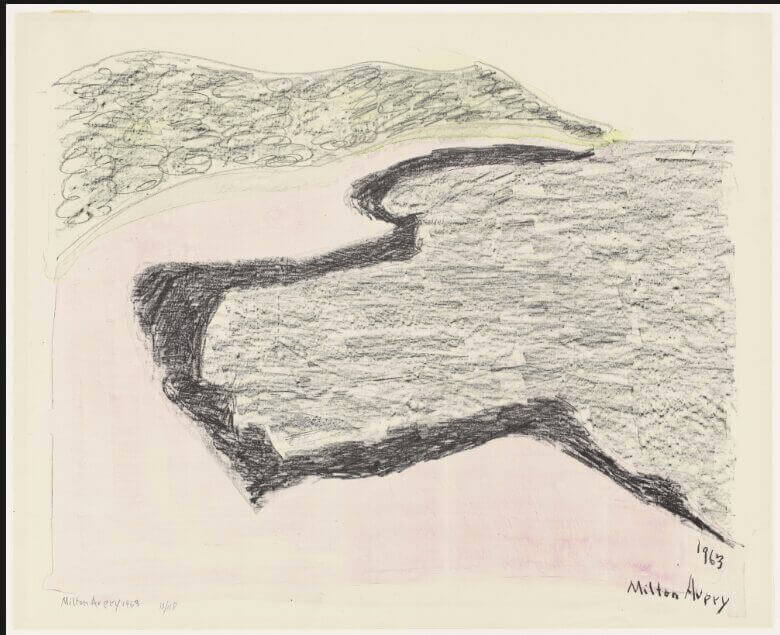Avery Milton
Milton Avery, an influential figure in American art, was born in 1885 and lived in and around Hartford, Connecticut, until 1925, when he moved to New York City—a pivotal shift that marked the beginning of his artistic evolution. Avery’s early life was marked by humble beginnings; he worked as a factory worker before discovering his passion for art. An advertisement for a lettering class at the Connecticut League of Art Students set him on this path, but when the class was canceled, he pivoted to life drawing—a move that would shape his future career.
In 1918, while employed at an insurance company during the night, Avery honed his skills at the School of the Art Society of Hartford. His dedication and talent quickly became apparent; by 1919, he had received top honors in portrait and life drawing classes. The summer of 1920 introduced him to the scenic landscapes of Gloucester, Massachusetts—a place that would become significant in his life. It was here, in 1924, that Avery met fellow artist Sally Michel, who would become his wife in 1926. Sally played a crucial role in Avery’s artistic pursuits, working as a freelance illustrator to support the family financially, allowing Avery to focus on his art.
Avery’s artistic journey was profoundly influenced by his encounters with modernist European art in New York galleries. The Valentine Gallery, renowned for its exhibitions of Matisse, Picasso, and others, fueled his inspiration. By the 1930s, Avery’s style began to incorporate simplified forms and flattened space, with clear, unmodulated color—a signature of his mature work. Despite financial struggles during this period, Avery’s spirit remained undeterred. His inclusion in the prestigious Valentine Gallery in 1935 revitalized his outlook and work.
Though Avery never formally joined any artists’ organizations, his home became a hub for creatives. Luminaries like Adolph Gottlieb, Mark Rothko, and Barnett Newman frequently visited, sharing ideas and camaraderie. Avery spent summers in inspiring locales like Gloucester and Vermont, where he constantly sketched his surroundings. Around 1938, the Averys began organizing sketch classes with friends, fostering a vibrant community of artists.
The year 1943 marked a turning point as Avery joined Paul Rosenberg’s New York gallery. This affiliation, combined with a retrospective at the Phillips Memorial Gallery in 1944, garnered him national acclaim. Yet, commercial success eluded him as sales remained sparse, and major New York museums showed little initial interest in his work. Nonetheless, Avery persevered, refining his craft and focusing on harmonious compositions.
Avery’s artistic exploration continued with a three-month stay in Mexico in 1946, which introduced new subjects into his work. However, a heart attack in 1949 forced him to adapt his creative process, leading to the creation of monotypes—a medium requiring quick execution. This adaptation influenced his painting style, leading to a greater emphasis on overall canvas harmony.
Although Avery’s work lost some traction during the Abstract Expressionism era of the early 1950s, his distinct vision ultimately secured his legacy. By the late 1950s, his use of vibrant color and refined forms was recognized as a subtle yet powerful force in mid-century American art. Avery’s life and work continue to inspire, reflecting a dedication to artistic exploration and a unique voice amongst his contemporaries.
Grey Sea, 1963
